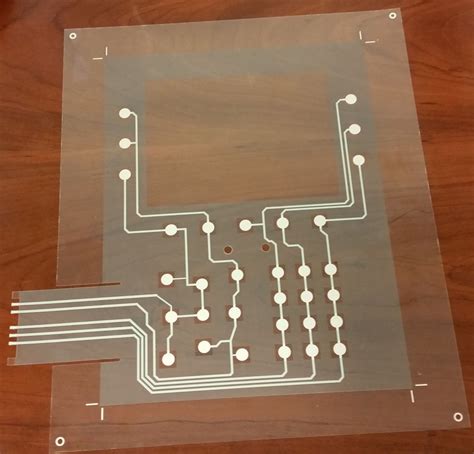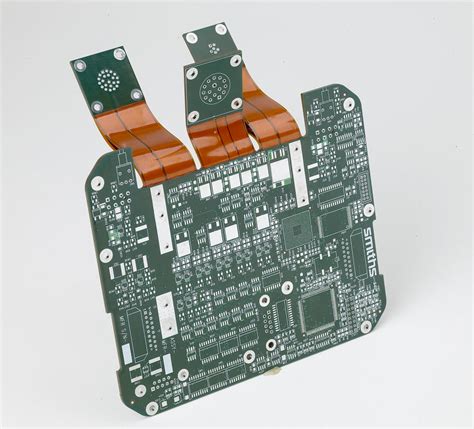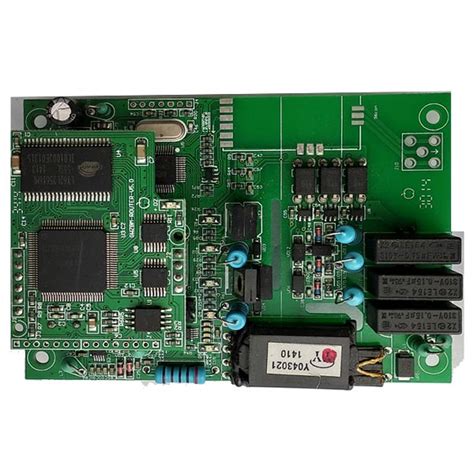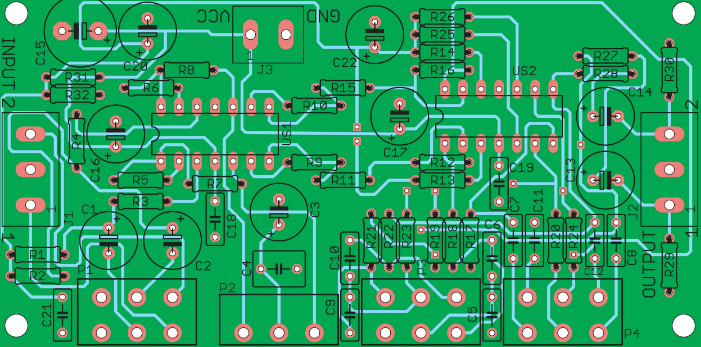Advanced Circuits PCB: Revolutionizing Modern Electronics
Introduction
Printed Circuit Boards (PCBs) are the backbone of modern electronics, serving as the foundation upon which electronic components are mounted and interconnected. As technology continues to evolve, the demand for more sophisticated, reliable, and high-performance PCBs has grown exponentially. Advanced Circuits, a leading PCB manufacturer, has been at the forefront of this evolution, providing cutting-edge solutions that cater to a wide range of industries, from consumer electronics to aerospace and defense. This article delves into the intricacies of Advanced Circuits PCBs, exploring their design, manufacturing processes, and the impact they have on modern electronics.
The Evolution of PCBs
The history of PCBs dates back to the early 20th century, when they were first developed as a means to simplify the wiring of electronic devices. Early PCBs were simple, single-layer boards with basic functionality. However, as electronic devices became more complex, the need for multi-layer PCBs with higher density and more advanced features emerged.
Advanced Circuits has been a key player in this evolution, consistently pushing the boundaries of PCB technology. Today, their PCBs are used in a wide range of applications, from smartphones and laptops to medical devices and military equipment. The company’s commitment to innovation and quality has made it a trusted partner for engineers and designers worldwide.
Design Considerations for Advanced Circuits PCBs
Designing a PCB is a complex process that requires careful consideration of various factors, including electrical performance, thermal management, and mechanical stability. Advanced Circuits employs a team of experienced engineers who work closely with clients to ensure that their PCBs meet the highest standards of quality and performance.
- Electrical Performance: One of the primary considerations in PCB design is ensuring optimal electrical performance. This involves minimizing signal loss, crosstalk, and electromagnetic interference (EMI). Advanced Circuits achieves this by using high-quality materials, precise routing techniques, and advanced simulation tools to model and optimize the electrical behavior of the PCB.
- Thermal Management: As electronic devices become more powerful, managing heat dissipation becomes increasingly important. Advanced Circuits addresses this challenge by incorporating thermal vias, heat sinks, and other cooling solutions into their PCB designs. They also use materials with high thermal conductivity to ensure efficient heat transfer and prevent overheating.
- Mechanical Stability: PCBs must be mechanically stable to withstand the rigors of assembly, operation, and environmental conditions. Advanced Circuits uses robust materials and design techniques to ensure that their PCBs can endure mechanical stress, vibration, and thermal cycling without compromising performance.
- Signal Integrity: Maintaining signal integrity is crucial for high-speed and high-frequency applications. Advanced Circuits employs advanced routing techniques, impedance matching, and signal conditioning to ensure that signals are transmitted with minimal distortion and loss.
- Miniaturization: As electronic devices become smaller and more compact, the demand for miniaturized PCBs has grown. Advanced Circuits specializes in high-density interconnect (HDI) PCBs, which allow for more components to be packed into a smaller space. This is achieved through the use of microvias, fine-pitch components, and advanced manufacturing techniques.

Manufacturing Processes
The manufacturing of Advanced Circuits PCBs involves a series of highly controlled and precise processes. Each step is critical to ensuring the final product meets the required specifications and performance standards.
- Material Selection: The choice of materials is crucial to the performance and reliability of a PCB. Advanced Circuits uses a variety of high-quality materials, including FR-4, polyimide, and Rogers laminates, depending on the specific requirements of the application. These materials are selected for their electrical, thermal, and mechanical properties.
- Layer Stackup: The layer stackup defines the arrangement of conductive and insulating layers in a multi-layer PCB. Advanced Circuits carefully designs the stackup to optimize electrical performance, thermal management, and signal integrity. The stackup is also tailored to meet the specific needs of the application, such as impedance control and EMI shielding.
- Imaging and Etching: The PCB design is transferred onto the copper-clad laminate using a photolithographic process. A photoresist is applied to the laminate, and the design is exposed to UV light through a photomask. The exposed areas are then etched away, leaving behind the desired copper traces.
- Drilling and Plating: Holes are drilled into the PCB to accommodate through-hole components and vias. These holes are then plated with copper to create electrical connections between layers. Advanced Circuits uses laser drilling for microvias, which allows for higher density and more precise interconnections.
- Solder Mask and Silkscreen: A solder mask is applied to the PCB to protect the copper traces from oxidation and prevent solder bridges during assembly. A silkscreen layer is also added to provide component labels, logos, and other markings. Advanced Circuits offers a variety of solder mask colors and finishes to meet the aesthetic and functional requirements of the PCB.
- Surface Finish: The surface finish is applied to the exposed copper to protect it from oxidation and ensure good solderability. Advanced Circuits offers a range of surface finishes, including HASL (Hot Air Solder Leveling), ENIG (Electroless Nickel Immersion Gold), and OSP (Organic Solderability Preservative), each with its own advantages and applications.
- Testing and Inspection: Quality control is a critical aspect of PCB manufacturing. Advanced Circuits employs a variety of testing and inspection methods, including automated optical inspection (AOI), electrical testing, and X-ray inspection, to ensure that each PCB meets the required specifications and performance standards.
Applications of Advanced Circuits PCBs
Advanced Circuits PCBs are used in a wide range of applications across various industries. Some of the key applications include:
- Consumer Electronics: Advanced Circuits PCBs are found in smartphones, tablets, laptops, and other consumer electronic devices. These PCBs are designed to be compact, lightweight, and highly reliable, ensuring optimal performance in a wide range of conditions.
- Medical Devices: The medical industry demands PCBs that are highly reliable, precise, and capable of withstanding harsh environments. Advanced Circuits PCBs are used in medical imaging equipment, diagnostic devices, and implantable medical devices, where performance and reliability are critical.
- Aerospace and Defense: The aerospace and defense industries require PCBs that can withstand extreme temperatures, vibrations, and radiation. Advanced Circuits PCBs are used in avionics, communication systems, and military equipment, where they must perform reliably in the most demanding conditions.
- Automotive: The automotive industry is increasingly relying on advanced electronics for vehicle control, safety, and entertainment systems. Advanced Circuits PCBs are used in engine control units, infotainment systems, and advanced driver-assistance systems (ADAS), where they must meet stringent automotive standards for reliability and performance.
- Industrial Automation: Advanced Circuits PCBs are used in industrial automation systems, including robotics, control systems, and sensors. These PCBs are designed to operate reliably in harsh industrial environments, withstanding high temperatures, humidity, and mechanical stress.

The Future of Advanced Circuits PCBs
As technology continues to advance, the demand for more sophisticated and high-performance PCBs will only grow. Advanced Circuits is well-positioned to meet this demand, with a strong focus on innovation, quality, and customer satisfaction.
- 5G and Beyond: The rollout of 5G networks and the development of future communication technologies will require PCBs with higher frequencies, lower signal loss, and greater reliability. Advanced Circuits is investing in advanced materials and manufacturing techniques to meet these challenges.
- Internet of Things (IoT): The proliferation of IoT devices will drive demand for compact, low-power, and highly reliable PCBs. Advanced Circuits is developing new solutions to support the growing IoT market, including flexible and rigid-flex PCBs that can be integrated into a wide range of devices.
- Artificial Intelligence (AI) and Machine Learning: AI and machine learning applications require high-performance computing systems with advanced PCBs that can handle massive amounts of data and complex algorithms. Advanced Circuits is working on next-generation PCBs that can support the computational demands of AI and machine learning.
- Sustainability: As environmental concerns become more pressing, there is a growing demand for sustainable PCB manufacturing practices. Advanced Circuits is committed to reducing its environmental impact by using eco-friendly materials, minimizing waste, and implementing energy-efficient manufacturing processes.
Conclusion
Advanced Circuits PCBs have played a pivotal role in the evolution of modern electronics, enabling the development of increasingly sophisticated and high-performance devices. With a strong focus on innovation, quality, and customer satisfaction, Advanced Circuits continues to lead the way in PCB technology, providing solutions that meet the demands of a wide range of industries. As technology continues to advance, Advanced Circuits is well-positioned to remain at the forefront of the PCB industry, driving innovation and shaping the future of electronics.







